Related Research Articles
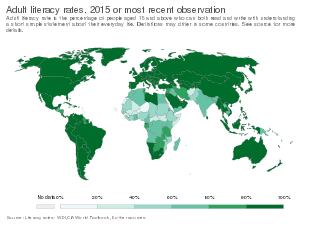
Literacy in its broadest sense describes "particular ways of thinking about and doing reading and writing" with the purpose of understanding or expressing thoughts or ideas in written form in some specific context of use. In other words, humans in literate societies have sets of practices for producing and consuming writing, and they also have beliefs about these practices. Reading, in this view, is always reading something for some purpose; writing is always writing something for someone for some purpose. Beliefs about reading, writing and their value for society and for the individual always influence the ways literacy is taught, learned, and practiced.
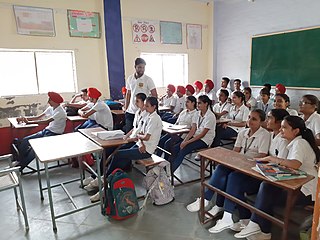
Education in India is primarily managed by the state-run public education system, which falls under the command of the government at three levels: central, state and local. Under various articles of the Indian Constitution and the Right of Children to Free and Compulsory Education Act, 2009, free and compulsory education is provided as a fundamental right to children aged 6 to 14. The approximate ratio of the total number of public schools to private schools in India is 10:3.

Education in the Soviet Union was guaranteed as a constitutional right to all people provided through state schools and universities. The education system that emerged after the establishment of the Soviet Union in 1922 became internationally renowned for its successes in eradicating illiteracy and cultivating a highly educated population. Its advantages were total access for all citizens and post-education employment. The Soviet Union recognized that the foundation of their system depended upon an educated population and development in the broad fields of engineering, the natural sciences, the life sciences and social sciences, along with basic education.
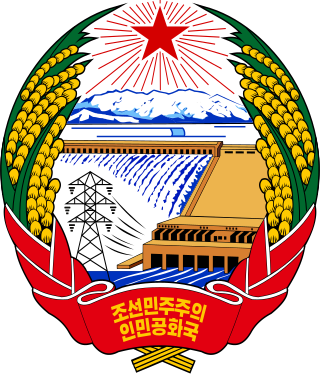
Education in North Korea is universal and state-funded schooling by the government. As of 2021, UNESCO Institute for Statistics does not report any data for North Korea's literacy rates. Some children go through one year of kindergarten, four years of primary education, six years of secondary education, and then on to university. North Korea’s national literacy rate for citizens aged 15 and older is 100 percent.
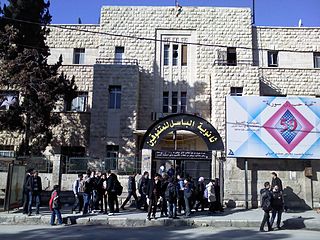
Education in the Syrian Arab Republic is given the necessary attention and care by the Syrian state, as the Syrian Constitution guarantees the right to education to every citizen, which is compulsory and free at primary level. It is free but not compulsory at the secondary level and higher education is available for a symbolic fee. the primary level includes 3 stages, 1 which include grades 1 to 6, while 2 includes grades 7 to 9,and lastly 3 grades 10 to 12

Education in Mozambique is organized by three main stages: primary education, secondary education and higher education. Although having a national public education system, several educational programmes and initiatives in Mozambique are mainly funded and supported by the international community.

Literacy in India is a key for social-economic progress. The 2011 census, indicated a 2001–2011 literacy growth of 97.2%, which is slower than the growth seen during the previous decade. An old analytical 1990 study estimated that it would take until 2060 for India to achieve universal literacy at then-current rate of progress.
The Modified Scheme of Elementary Education or New Scheme of Elementary Education or Madras Scheme of Elementary Education dubbed by its critics as Kula Kalvi Thittam, was an abortive attempt at education reform introduced by the Indian National Congress Government of the Madras State, led by C. Rajagopalachari (Rajaji) in 1953. The scheme proposed the introduction of two shifts or sessions in elementary schools. In one session regular teaching would be done and during the second session, the students would be sent home to learn the occupations of their parents. It became controversial and was accused of being a casteist scheme to perpetuate the caste hierarchy as Hindu Professions were caste based. Public opposition and internal dissent within the congress led to the deferment of the scheme. The discontent it triggered among the Congress legislature members forced the resignation of Rajaji as Chief Minister. The scheme was dropped completely by Rajaji's successor Kamaraj in 1954.

Education in Chad is challenging due to the nation's dispersed population and a certain degree of reluctance on the part of parents to send their children to school. Although attendance is compulsory, only 68% of boys continue their education past primary school, and over half of the population is illiterate. Higher education is provided at the University of N'Djamena.

Western-style education was introduced to Bhutan during the reign of Ugyen Wangchuck (1907–26). Until the 1950s, the only formal education available to Bhutanese students, except for private schools in Ha and Bumthang, was through Buddhist monasteries. In the 1950s, several private secular schools were established without government support, and several others were established in major district towns with government backing. By the late 1950s, there were twenty-nine government and thirty private primary schools, but only about 2,500 children were enrolled. Secondary education was available only in India. Eventually, the private schools were taken under government supervision to raise the quality of education provided. Although some primary schools in remote areas had to be closed because of low attendance, the most significant modern developments in education came during the period of the First Development Plan (1961–66), when some 108 schools were operating and 15,000 students were enrolled.
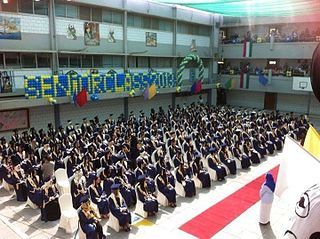
The State of Kuwait, located at the head of the Persian Gulf, supports an educational policy that seeks to provide an opportunity to all children, irrespective of their social class, including children with special needs. Kuwait was ranked 63rd on the Human Development Index report for 2011 by the United Nations Development Programme, placing Kuwait above the regional average.

Before World War II, the literacy rate in Romania ranked among the lowest in Europe. In 1930, at the time of the first official census, more than 38 percent of the population over seven years of age were considered illiterate: 50 percent of the women and over 25 percent of the men in the entire population of about 18 million were unable to read or write. In rural areas, where most of the population lived, illiteracy rate was considered even higher. Prominent reasons for the lack of literacy were that children of school age either were not enrolled in school or, if they were, did not attend classes regularly. There was also a fairly large percentage of children who left school without completing their studies or, having completed only the compulsory first four grades, relapsed into illiteracy in adult life.
Gender inequality in India refers to health, education, economic and political inequalities between men and women in India. Various international gender inequality indices rank India differently on each of these factors, as well as on a composite basis, and these indices are controversial.
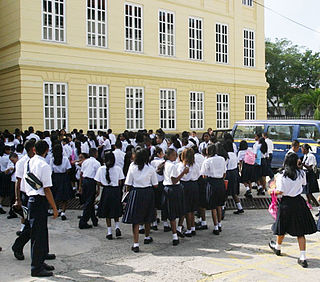
Education in Panama is compulsory for the first six years of primary education and the first three years of secondary school. As of the 2004/2005 school year there were about 430,000 students enrolled in grades one through six. The total enrollment in the six secondary grades for the same period was 253,900. More than 91% of Panamanians are literate.
The Right of Children to Free and Compulsory Education Act or Right to Education Act (RTE) is an Act of the Parliament of India enacted on 4 August 2009, which describes the modalities of the importance of free and compulsory education for children between the age of 6 to 14 years in India under Article 21A of the Indian Constitution. India became one of 135 countries to make education a fundamental right of every child when the act came into force on 1 April 2010. The title of the RTE Act incorporates the words ‘free and compulsory’. ‘Free education’ means that no child, other than a child who has been admitted by his or her parents to a school which is not supported by the appropriate Government, shall be liable to pay any kind of fee or charges or expenses which may prevent him or her from pursuing and completing elementary education. ‘Compulsory education’ casts an obligation on the appropriate Government and local authorities to provide and ensure admission, attendance and completion of elementary education by all children in the 6-14 age group. With this, India has moved forward to a rights based framework that casts a legal obligation on the Central and State Governments to implement this fundamental child right as enshrined in the Article 21A of the Constitution, in accordance with the provisions of the RTE Act.17.

Mohini Jain v. State of Karnataka, a 1992 Supreme Court of India case, occurred when the Government of Karnataka issued a notification that permitted the private medical colleges in the State of Karnataka to charge exorbitant tuition fees from the students admitted other than the "Government seat quota". Miss Mohini Jain, a medical aspirant student filed a petition in Supreme Court challenging this notification. The apex Court raised an important question that "whether right to education is guaranteed to the Indian citizen under the Constitution of India?"
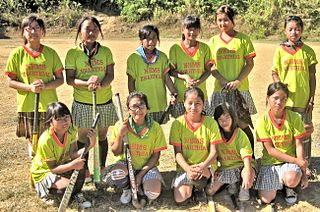
Education in Mizoram consists of a diverse array of formal education systems ranging from elementary to university, from training institution to technical courses. The Government of India imposes mandatory education at least up to the basic level. For this public schools are made free of fees, and provided with free textbooks and school lunch.
The printing industry in India is an important industry in that country.
Rashtriya Madhyamik Shiksha Abhiyan (RMSA) is a centrally sponsored scheme of the Ministry of Human Resource Development, Government of India, for the development of secondary education in public schools throughout India. It was launched in March 2009. The implementation of the scheme has started from 2009–2010 to provide conditions for an efficient growth, development and equity for all. The scheme includes a multidimensional research, technical consulting, various implementations and funding support. The principal objectives are to enhance quality of secondary education and increase the total enrollment rate from 52% to 75% in five years, i.e. from 2009 to 2014. It aims to provide universal education for all children between 15 and 16 years of age. The funding from the central ministry is provided through state governments, which establish separate implementing agencies. The total budget allocated during the XI Five Year Plan (2002-2007) was ₹2,012 billion (US$25 billion).
When the People's Republic of China was founded in 1949, more than 400 million of the country's more than 500 million people were illiterate, and the illiteracy rate was about 80 percent, including over 95 percent in rural areas. In 1964, the results of the second national census showed that the country's total population was 723 million, and the literacy campaign reduced the illiteracy rate in China to 52%, and about 100 million people became literate. However, after that, the literacy movement was largely interrupted during the "Cultural Revolution," and intellectuals became one of the first groups to be overthrown, regarded as bourgeois "reactionary academic institutions" and "old men," and they were widely criticized and persecuted. During the Cultural Revolution, the college entrance examination system was suspended, and millions of educated young people went to the countryside.
References
- ↑ Central Advisory Board of Education. "Report of the Sargent Commission on Post-War Education Development in India".
- ↑ Ram Nath Sharma, Rajendra Kumar Sharma (1996), History Of Education In India, Atlantic Publishers & Distributors, ISBN 81-7156-599-9,
... John Sargent was the Educational Advisor to the Government of India. John Sargent was deputed to draw up a memorandum for the development of Indian education in the post-war reconstruction period. He submitted his memorandum before the Central Advisory Board of Education in 1944. The board accepted it in to and recommended its enforcement ...
- 1 2 Indian Educational Acts, Jupiter Infomedia Pvt Ltd,
... named after Sir John Sargent, who was the educational Advisor to the Government of India ... envisaged the introduction of universal free and compulsory education for the children between the ages of 6 to 14 years...
- 1 2 India Talks - Amartya Sen, MediaWeb India, retrieved 20 September 2009,
... would make India literate in 40 years, and the nationalist leaders rightly laughed it out of court, on the grounds that India did not have the patience to remain for 40 years without Universal Literacy. Now 50 years have gone by, and the country is still half illiterate, two-thirds of the women are illiterate...
- ↑ "India's literacy rate increase sluggish", Indiainfo.com, 1 February 2008, archived from the original on 28 August 2009, retrieved 20 September 2009,
... Literacy in India is increasing at a sluggish rate of 1.5 percent per year, says a recent report of the National Sample Survey Organisation (NSSO) ... India's average literacy rate is pegged at 65.38 percent ...